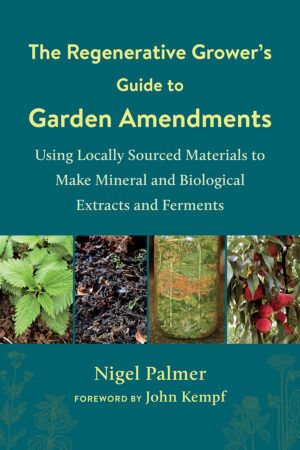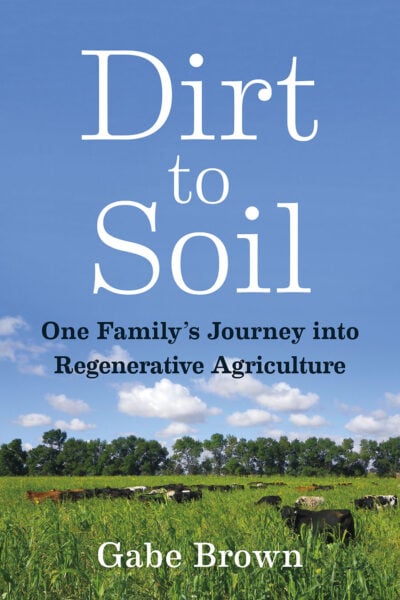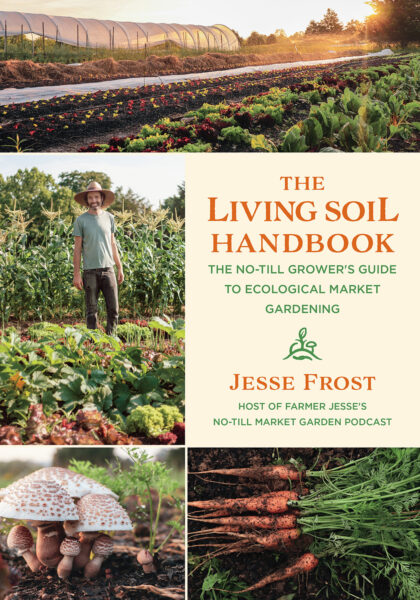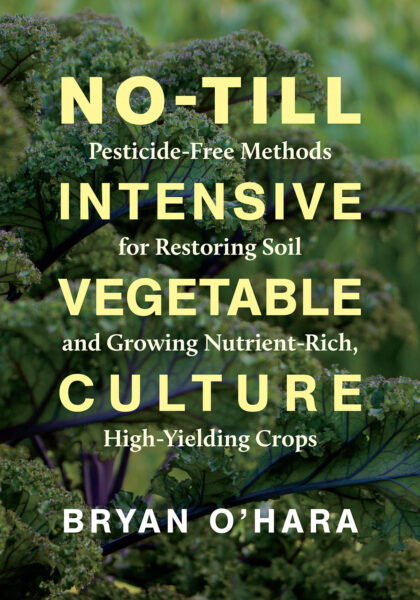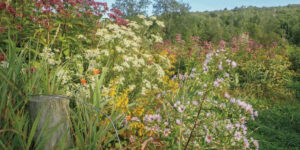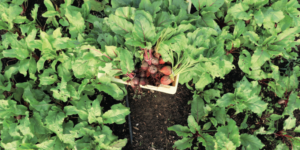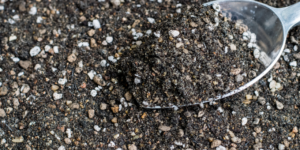Testing Soil: Healthy Soil is Just A Test Away
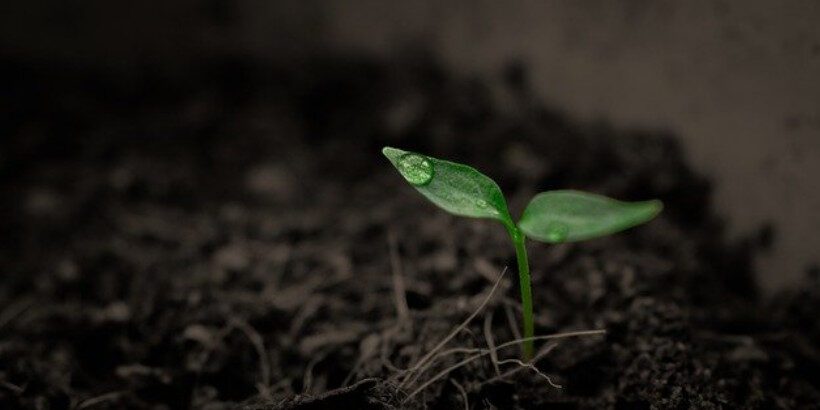
Testing soil in your garden is the first step to a more bountiful harvest. It’s not as hard as you might imagine, either — simply take a small sample, get it examined, and you’ll be on your way to healthy soil and a promising harvest this season.
The following is an excerpt from The Regenerative Grower’s Guide to Garden Amendments by Nigel Palmer. It has been adapted for the web.
Testing Soil: The Fundamentals
An important first step is to identify a testing lab that will conduct a test that includes all the microminerals and trace minerals of interest. Soil tests need not be conducted every year, making this a reasonable investment, especially if no information about the mineral content of the soil is available.
In order to evaluate soil mineral content, the lab staff rinses samples in a weak acid solution. The acid solution simulates the weak acids that the soil biology produces in order to break down minerals (rock particles). This test is a way to estimate the availability of minerals in the soil.
Soil Testing Methods
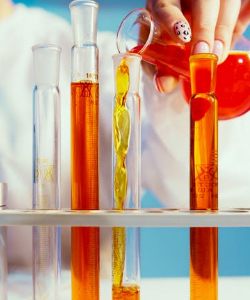 Acids of different strengths are used to rinse the soil, and the test names are a way of differentiating the strength of acid used. The test known as the Mehlich 3 test provides a reasonable measure of plant available minerals in the soil.
Acids of different strengths are used to rinse the soil, and the test names are a way of differentiating the strength of acid used. The test known as the Mehlich 3 test provides a reasonable measure of plant available minerals in the soil.
More recently a testing method called a Haney soil test has become popular. Discussing these test methods with a specific lab will shed light on which may be best for a particular situation.
A lab should offer detailed directions on how to conduct a soil test and the nature of its analysis. Look for this information on the testing lab’s website.
Once you’ve chosen a lab, it’s a good idea to keep using it over time to limit any sources of test variation when comparing results year after year.
Testing Soil: When To Test
Another way to reduce variation is to collect soil samples for testing at the same time every year. It is interesting to note that soil mineral proportions change over the course of a year, and that the fall represents a low point in soil mineral content.
This is a lovely concept to ponder, because it brings to light the power of soil biology over those cold winter months and early spring working to digest available minerals for next year’s plants to ingest. Yes, the soil digestive system continues working even in the depths of winter.
Conducting a soil test in the fall captures this low point of the mineral availability cycle, and it’s a time of year when other garden chores may have subsided.
Collecting A Soil Sample For Testing
In general, collect samples from the top 6 inches (15 cm) of the soil, which is (theoretically) equivalent to the depth of the root zone of many crops. This 6-inch depth is also relevant when doing calculations of amendment needs. There is a special device one can buy that collects perfect “cores” of soil.
Another easy way to collect a sample is to use a trowel.
Before digging, be sure the tools used for gathering, mixing, and packaging are clean and not contaminated by rust or other contaminants.
Scrape away any plant or other debris from the surface of the soil and dig the hole a little over 6 inches deep. Remove a sample about 2 inches (5 cm) thick from the side of the hole, slicing down about 6 inches. Be sure that the sample does not include any material other than soil.
Gather several samples in this manner from various spots in the garden. As a rule of thumb, collect five or six samples within a 50-by-50-foot (15 × 15 m) area. The goal is to determine the average characteristics of the garden’s soil overall.
Next, thoroughly mix all the individual samples together in a clean bucket. Once mixing is completed, remove 1 to 2 cups of soil from this bucket.
This represents an average of the top 6 inches of soil in the garden. Package this up and send it to the lab for analysis. And remember, even more detailed instructions for collecting samples should be available through the testing lab.
Testing Soil: The Results
The first time the soil is tested, the results may be disheartening, but fear not.
Even in a new garden that has some soil imbalances, the harvest of freshly picked produce will still be more nutritionally rich and flavorful than store-bought produce that was picked long ago and transported hundreds or thousands of miles.
Also keep in mind that it may take longer than one year to correct many soil mineral deficiencies. It may take several years.
The same may be true for excesses—it may take several years before those levels decline to an optimal range. The important thing is that objective information is now available to develop both long- and short-term amendment strategies. Just imagine how good those tomatoes will taste next year!
Recommended Reads
Recent Articles
Certain plants, like thistle, are considered “invasive” to many people. However, these seemingly pesky plants can be used to help existing ecosystems. The following are excerpts from Beyond the War on Invasive Species by Tao Orion and The Wild Wisdom of Weeds by Katrina Blair. They have been adapted for the web. Managinng Thistle To Tao Orion,…
Read MorePicture-perfect farms may be aesthetically pleasing, but they’re likely lacking in biodiversity. Rewilding practices allow the land to return to its natural wild state, providing more room for fruit-bearing plants to grow and animals to control small pests. The following is an excerpt from Farming on the Wild Side by Nancy J. Hayden and John…
Read MoreLet’s drop the beet! Beets can be grown year-round and are a perfect, flavorful addition to meals. Get started on growing your own no-till beets with help from these tips! The following is an excerpt from The Living Soil Handbook by Jesse Frost. It has a been adapted for the web. How to Grow No-Till…
Read MoreHow do you control bugs & pests on your fruit trees without using harmful sprays and treatments? Here are some tips for identifying insects on fruit trees and controlling them organically. The following is an excerpt from The Holistic Orchard by Michael Phillips. It has been adapted for the web. Finding Insects On Fruit Trees…
Read MoreLooking for ways to naturally enrich your garden? The answer is all around you….literally. Add local rocks & soil to your garden to improve soil health and see your crops flourishing in no time. The following is an excerpt from The Regenerative Grower’s Guide to Garden Amendments by Nigel Palmer. It has been adapted for the…
Read More
